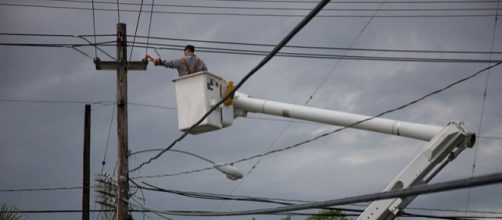Life was devastated in Puerto Rico when Hurricane Maria struck in September 2017. It destroyed the rickety electric supply network and plunged the island into darkness. Many residents lost their belongings and fled to the United States mainland to be with relatives and friends and begin life anew. Those who remained are still stuck with diesel generators and candles because even after six months some localities are still without electricity.
Japan Times reports that Hurricane Maria was the strongest storm to have hit the island in nearly a century.
The outdated electric supply network suffered extensive damage since the force of the hurricane uprooted many electric poles. The time has come for the 2018 Atlantic hurricane season to start, and the authorities must rise to the challenge and take timely action.
Restoration work must be the priority
Hurricane Maria has revealed the condition of the electrical network in Puerto Rico and its inability to deliver. The strong winds had uprooted electrical poles and had thrown the power supply system into total disarray. Some of the poles are made of wood, some of cement and many of these are still leaning haphazardly across the island.
The authorities have taken up work to restore electricity but many localities continue to remain in darkness and face frequent power outages.
According to Justo Gonzalez, former interim director for Puerto Rico’s Electric Power Authority, power will be restored to the entire island by May. That will be eight months after the Category 4 storm struck.
The government of Puerto Rico has estimated the cost of damages due to the storm to be around the $100 billion mark. Nearly 400,000 houses were destroyed and the loss of lives has been reported. Thousands have fled to the mainland and settled in Florida and other cities.
The island must root for solar power
The electric power network in Puerto Rico is outdated, and to bring it up to current levels of technology would be a herculean task that would require funds. Hurricane Maria has taught a lesson, and the decision makers must use this opportunity to explore possibilities to switch over to solar power.
That will ensure readily availability electricity.
They should also focus on controlling global warming which is believed to be a factor responsible for sudden hurricanes that leave behind a trail of destruction. CO2 emission must be stopped and the use of fossil fuels must be discouraged.
PBS News Hour reports that the town of Adjuntas in central Puerto Rico is home to Casa Pueblo which is a combined community center, and an environmental organization. It has been fully solar powered since 1999, and was a great help to the residents during the hurricane. It is now raising funds to expand solar systems in the town and to install solar-powered street lamps.


